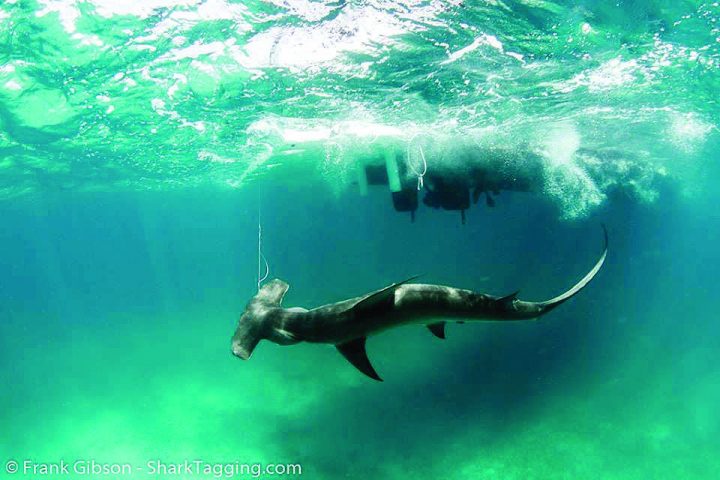A new study that examined the survival rates of 12 different shark species when captured as bycatch in commercial longline fishing operations found large differences in survival rates across the species, with bigeye thresher, dusky and scalloped hammerhead being the most vulnerable. The study, led by researchers at the University of Miami, provides new information to consider for future conservation measures for sharks.
Researchers analyzed more than 10 years of shark bycatch data from the western Atlantic Ocean and Gulf of Mexico longline fisheries. Some species, such as the tiger shark, exhibited over 95-percent survival, whereas other species’ survival was significantly lower, in the 20- to 40-percent range, such as night sharks and scalloped hammerheads.
“Our study found that the differences in how longline fishing is actually conducted, such as the depth, duration and time of day that the longlines are fished can be a major driver of shark survival, depending on the species,” said lead author Austin Gallagher. “At-vessel mortality is a crucial piece of the puzzle in terms of assessing the vulnerability of these open-ocean populations, some of which are highly threatened.”

The researchers also generated overall vulnerability rankings of species taking into account not only their survival, but also reproductive potential. They found that species most at risk were those with both very slow reproductive potential and unusual body features, such as hammerheads and thresher sharks. The researchers suggest that high at-vessel mortality, slow maturity and specialized body structures combine for the perfect mixture to become extinction-prone.
The study, titled “Vulnerability of Oceanic Sharks as Pelagic Longline Bycatch” was published online in the open-access journal Global Ecology and Conservation.
Share your opinion on commercial long-lining studies in the comment section below!